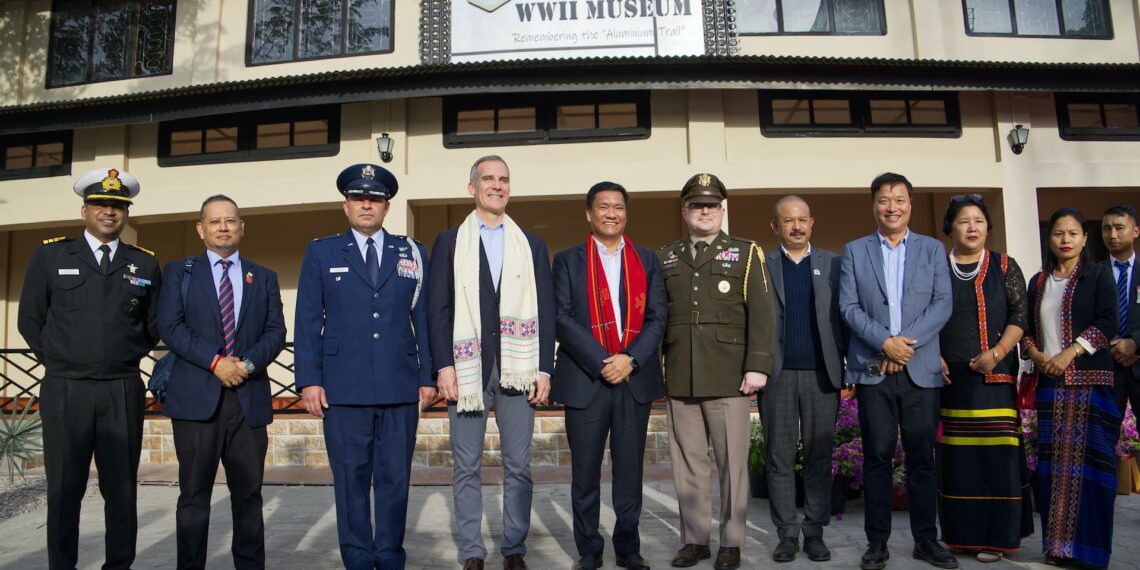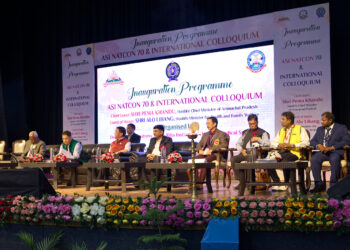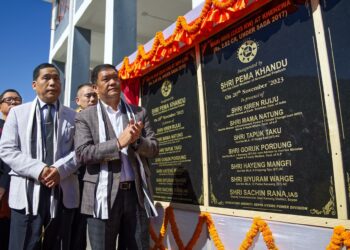Pasighat: US Ambassador to India Eric Garcetti on Wednesday inaugurated ‘The Hump WWII Museum’ in India’s frontier state of Arunachal Pradesh, the second museum in Asia, dedicated to the fallen airmen of the Allied forces during World War II.
The museum’s name pays tribute to the Hump operation, one of the most remarkable feats of aviation history during the World War II.
“We come here today not just to mark history but to make history. To see the ways with which each one of us is called not just to witness the past but to do something to change the future,” Garcetti said in a ceremony to mark the occasion.
The top American diplomat profusely thanked and expressed gratitude to the Indian government, the Arunachal Pradesh government and the team behind the museum headed by its Director Oken Tayeng.
“This is not a gift only to Arunachal Pradesh or to the families whose lives will be affected when they come here but it is a gift to India and to the world,” Garcetti said.
The Hump Museum, Garcetti said , is not just a museum in some remote part of India, but already a world-class museum.
Reiterating that the United States is committed to its friendship with India, the US Ambassador informed that on Wednesday there was a meeting between NASA Administrator Bill Nelson and top space officials of India to deepen bilateral cooperation across a broad range of innovation and research-related areas, especially in human exploration and Earth science.
He said that NASA this year would facilitate an Indian to be a part of space exploration from its station in the US.
“US will always remain grateful to the people of Arunachal Pradesh for saving lives and helping US pilots and soldiers during WW-II while flying over the Hump, Garcetti said that such ‘human values’ binds the two countries together in friendship,” he said.
“Today how can we not but step up to be a great friend to India, to recognize her borders, all of them, and to respect them and to call on the world to do the same,” he said.
Welcoming the US Ambassador, Arunachal Chief Minister said, ‘The Hump Museum’ was a tribute from the people of Arunachal Pradesh to the fallen heroes of the WW-II.
“History should not be allowed to fade away with time and expressed optimism that the museum will remind the younger generation of the daredevilry of the Allied forces who flew over the ‘Hump’ to fight against the threat to democracy and freedom,” he said.
Khandu urged the US Ambassador to facilitate exploration in 30 locations in the state where remnants of WW II aircraft are still believed to exist and assured full support of the state government.
He also lauded the efforts put in by Oken Tayeng and his team for making his vision a reality.
“All the remnants and relics including, letters of US airmen communicating to their families recovered from the crash sites, are being displayed in the museum which will soon attract tourists from across the globe,” he said.
Tayeng said the remnants of crushed warplanes available in the museum were collected from eight sites in the state.
“Lot of challenges faced by the search teams to recover the remnants of the fallen aircraft,” Tayeng added.
During World War II, the United States flew supplies over the Himalayas, on a route known as ‘The Hump’ because of the altitude of the Eastern Himalaya many of their aircraft went missing and were never found in our then remote jungles and mountains,” the Chief Minister explained.
“The Hump route traverses regions of Arunachal Pradesh, Assam, Tibet, Yunnan and Myanmar, and it is estimated that nearly 650 aircraft crashed in these areas during World War II due to extreme flying conditions,” Khandu said.
Arunachal Pradesh, bordering China, was part of the flight route used by American aircraft to transport supplies from airfields in Upper Assam to Kunming in China to allied troops in China.
American pilots were forced to fly the perilous route in April 1942 when the Japanese army cut off the main road between Burma and China, and the operations continued until near the end of the war in 1945.
Allied pilots transported 650,000 tonnes of supplies over mountains for the Chinese government and anti-Japanese forces.
People living in Arunachal Pradesh claim to have seen wreckages on many occasions.
The Americans believe more than 400 US servicemen and women were lost on the Indian side of the border.
China had recovered some remains of US servicemen on their side of what is a disputed stretch of the India-China border.












